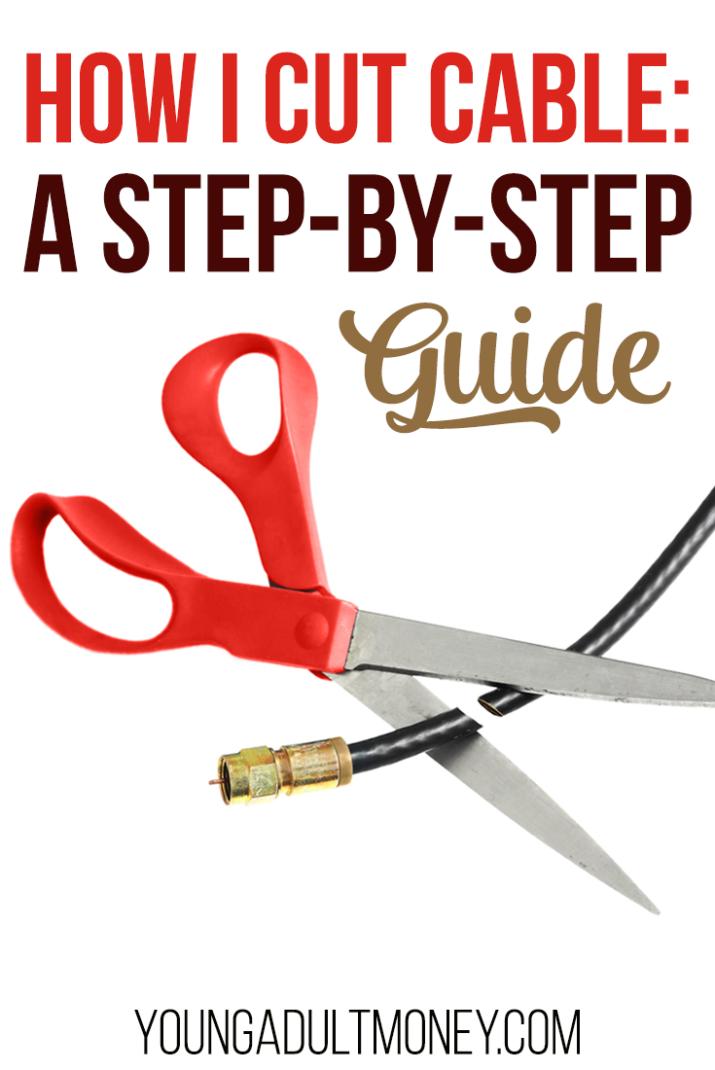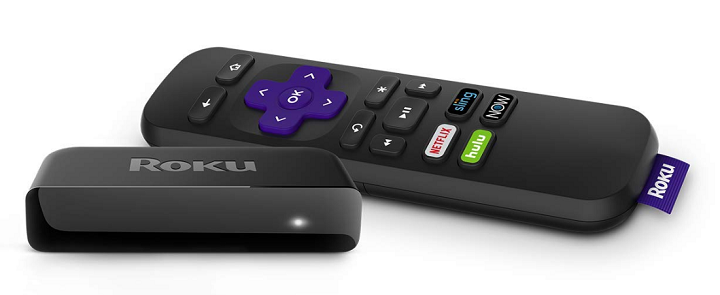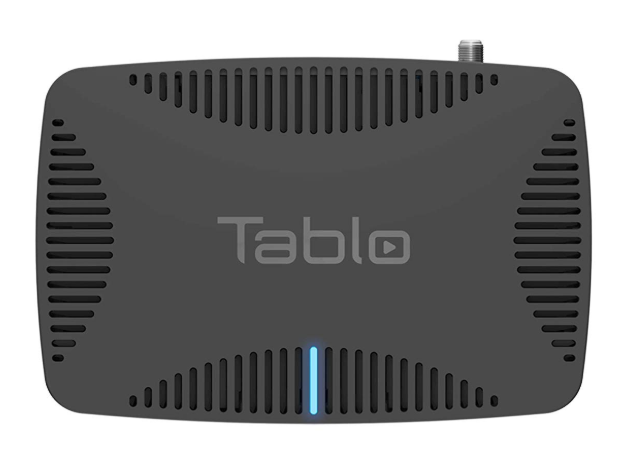 Considering how much we’ve written about cord-cutting on the site, many will be surprised to hear that it wasn’t until a couple years ago that my wife and I decided to cut cable.
Considering how much we’ve written about cord-cutting on the site, many will be surprised to hear that it wasn’t until a couple years ago that my wife and I decided to cut cable.
We aren’t alone, though: as of 2015 there was still approximately 100 million households that subscribed to some type of paid TV service purchased through either a cable, satellite, or phone company.
For us, the amount of money we spent on cable was simply unsustainable. My wife and I are frugal and don’t like to spend a ton of money on entertainment.
A concert or sporting event once in a while are good, but spending $160 a month for cable and internet? No thank you.
And let’s not forget the games that you have to play when you have cable. It’s incredible the length they go to gouge their existing customers.
I don’t miss the annual phone calls asking why my rate was increased by $30 or watching my bill like a hawk each month in case Xfinity tried to sneak in an increase. Granted, I do still have the same problem with their internet.
Despite the millions of subscribers they currently have, cable is an outdated industry that is slowly dying. Thankfully we live in a time of innovation where more and more competitors are answering the cry for straightforward pricing, affordable options, and great content.
In this post I will give you a step-by-step guide of how I cut cable, including what I replaced it with and what sort of savings we are looking at because of the cut (spoiler alert: the savings are huge!).
Step 1: Get a Digital Antenna
The first thing you want to do is get a Digital HDTV Antenna. This will allow you to receive all the free channels that don’t require cable or another service to view in your home.
These digital antennas aren’t what they used to be. In my attic there is a massive antenna. This used to be necessary…decades ago.
Flash forward forty years and we have paper-thin digital HDTV antennas that are many times more powerful than old analog antennas.
This digital antenna costs less than $30, has a 120 mile range, supports 4k 1080p and all older televisions, and comes with an 13-foot coaxial cable.
Easy first step, right? On to the next one.
Step 2: Get a Roku
The next step in cutting cable is getting a Roku.
I think it’s important to understand what a Roku is and what a Roku is not. A Roku isn’t a magical device that gives you access to unlimited free, premium content. I think of the Roku as more of a platform that allows you to add services, or “channels,” like Netflix, Amazon Prime Video, and any other number of streaming options.
Nevertheless, Roku is something you should purchase if you are going to cut cable. It has a simple, sleek user interface that I think most people will really enjoy. I’ve been using it for years, even before I cancelled cable.
The newest Roku option is the Roku Premiere. This is HD/4K/HDR compatible with an included remote and HDMI cable. It will cost you less than $40. There is also the Roku Streaming Stick+, which is what I use.
Alternatives to Roku include the Amazon Fire TV Stick and Apple TV.
Purchased your streaming device? Then you’re ready for the next step: picking your streaming options.
Step 3: Pick Your Streaming Options
While cost and awful customer service are two big reasons people are ditching cable, another is the availability of streaming options. There are currently 100+ different streaming services, with many more set to release over the next couple of years.
Adding streaming options isn’t mandatory, but typically makes cutting cable more enjoyable. Depending on what sort of video content you consume, some may not even feel a difference when they switch from cable to streaming options.
Here are some of the more popular streaming options:
Netflix – Netflix has more than 139 million subscribers. Even if you haven’t cut cable, you likely already have a Netflix account. Netflix has a basic plan for $8.99 that does not offer HD (and I suspect has few users), a standard plan for $12.99 supports HD and streaming from two screens simultaneously, and a premium plan for $15.99 that supports ultra HD and allows streaming on four screens simultaneously.
I am a big fan of Netflix because I think the price is very reasonable for the content library. They have tons of original TV series and movies, and I appreciate the fact they are investing so much (billions) in their content.
SlingTV – SlingTV offers three different skinny bundles, two for $25 and one for $40. One of the $25 packages has ESPN while the other has Fox Sports One. The combined $40 version has both. But that’s not all the skinny bundles offer. They come with many popular TV channels like CNN, HGTV, TBS, FX, History, and many more. You can view all the options here.
I’ve used Sling off and on. Being able to watch live sports without a traditional cable plan is a big draw for Sling, but there’s many other channels that aren’t sports-related. There’s no contract, either, and you can start and stop as you please.
It’s also worth noting that with some shows you are able to stream on demand. For example there are a variety of History Channel shows where you can start with season one and watch at your pace, despite the fact Sling is a “skinny bundle” that has traditional cable channels.
Amazon Video – Amazon Video isn’t the best streaming service, as their library of content is lacking. With that being said, it’s included if you have a Prime account, which many purchase for free delivery. I’m one of those people, so any content I use on Amazon Video is essentially a bonus. The cost of Amazon Prime is $12.99 a month, or $99 a year (if paid annually). There is an HBO add-on for $15 a month that you can start and stop whenever you want.
YouTube TV – Similar to SlingTV, YouTube TV is a skinny bundle alternative to traditional cable. In reality, with 70+ live TV channels including sports and local TV, it feels more like a “hassle-free” and transparent version of traditional cable. The cost is $49.99 a month and like most streaming options, you can cancel anytime.
I haven’t used YouTube TV, but I’ve been tempted to give it a try. There is unlimited cloud DVR storage, and it includes all of the big sports channels such as ESPN and FS1, as well as the big news and lifestyle channels.
We’ve hardly scratched the surface here. There are many other options available, including Hulu, PlayStation Vue, CBS All Access, and fuboTV. The sheer number of options can be overwhelming, but remember with most of these services you can start and stop whenever you want. If you don’t find yourself using a service enough to justify the monthly cost, cancel it.
Step 4: Purchase a DVR
Purchasing a DVR is another optional step, but as someone who used to record a lot of shows using my cable DVR, it was an important feature for my cord cutting setup. (If you get YouTube TV you can skip this step since unlimited cloud DVR is included.)
There were two things I were looking for in a DVR: no monthly fee and a large amount of storage.
I found both of those in the Tivo Roamio. With 1 TB of storage capacity and no monthly fees, I was sold.
Unfortunately it appears that Tivo is back to pushing their subscription plans. That doesn’t mean you can’t find the Tivo Roamio anymore, you’ll just end up getting a refurbished one instead of a new one.
A good alternative Tablo Quad OTA DVR. This will run you approximately $250 and is a bit unique as it connects via WiFi, while most DVRs plug into the digital TV antenna.
Step 5: Cut Cable!
Calling the cable company is never fun, and if you’re like me you have made many calls over the years and been forced to play their game of constantly putting existing customers through the ringer, squeezing every last dollar out of you until you are shaking with rage.
In an ideal situation you would be cancelling all services from your current cable provider. But for many of you the call will consist of asking for a service downgrade.
This was my situation with Xfinity. It was not an enjoyable call because the pricing games continued.
To prepare for the call I went to the Xfinity website and looked for rates that would be offered to someone moving into my house. This is an essential step I would take prior to calling to end your cable service.
After calling and having the agent twice offering me bundle deals, despite me telling him I wouldn’t accept even if they were dirt cheap, he said the best deal he could give me at my current internet speed of 100 mbps was $74.99/month.
My first thought was: this is insane! But not surprising, unfortunately.
I tried to stay calm but it’s tough when you’ve been through this so many times before. I told him I had a screenshot that showed a new customer would receive a rate of $59.99 for 12 months with no contract.
I also told him I could literally cancel right now and with one click my wife would be set up with the lower rate, so why don’t we save each other time and just honor the rate?
We then went back and forth for over five minutes of why new customers are given better rates. It wasn’t until I said these pricing games and awful treatment of existing customers are the main reason we are getting rid of cable, and if they don’t honor the rate right now we were leaving for a competitor’s offering.
I was put on hold and all of a sudden they could give me the new customer rate.
Bottom line: always be prepared when it comes to negotiations with the cable company. Arm yourself prior to your call and know what rates they are offering to new customers.
The Savings
You are virtually guaranteed to save money by cutting cable out of your budget, even if you tack on extra streaming options like we did.
Our cable bill was $157/month. Even more unfortunate is that this is on the “low” end of cable and internet bundles. Keeping it this low required annual calls to Xfinity and one time a very real threat to cancel all our services with them (internet included).
Our new cost is $60/month for 100 mbps internet. It’s no contract, which is great as I like the flexibility and leverage it gives us.
There is clearly some startup costs involved with cord cutting, but if you forgo purchasing the DVR for $250 the costs are minimal. Quality digital antennas are available for less than $30. Roku or other streaming sticks are typically around the $50 price range.
Even if we spend an average of $50 a month on streaming options, we’d save approximately $50 a month, or $600 a year. If we spend $20 a month on streaming options we’d save approximately $80 a month or nearly $1,000 a year.
Cutting cable has never been easier, nor has there ever been so many alternative entertainment options. If you’ve ever thought of cutting cable, now is the time.
Product Roundup
Because this was a massive post, here’s a quick summary of everything I purchased and recommend purchasing to cut cable:
- HD Digital Antenna: Amplified HD Digital TV Antenna With 120 Mile Range
- Streaming Hardware/Software: Roku Premiere
- DVR: Tablo Quad OTA DVR




I never had cable and honestly I lived well
I still have cable. I like my sports too much to worry about a stream going down or something.